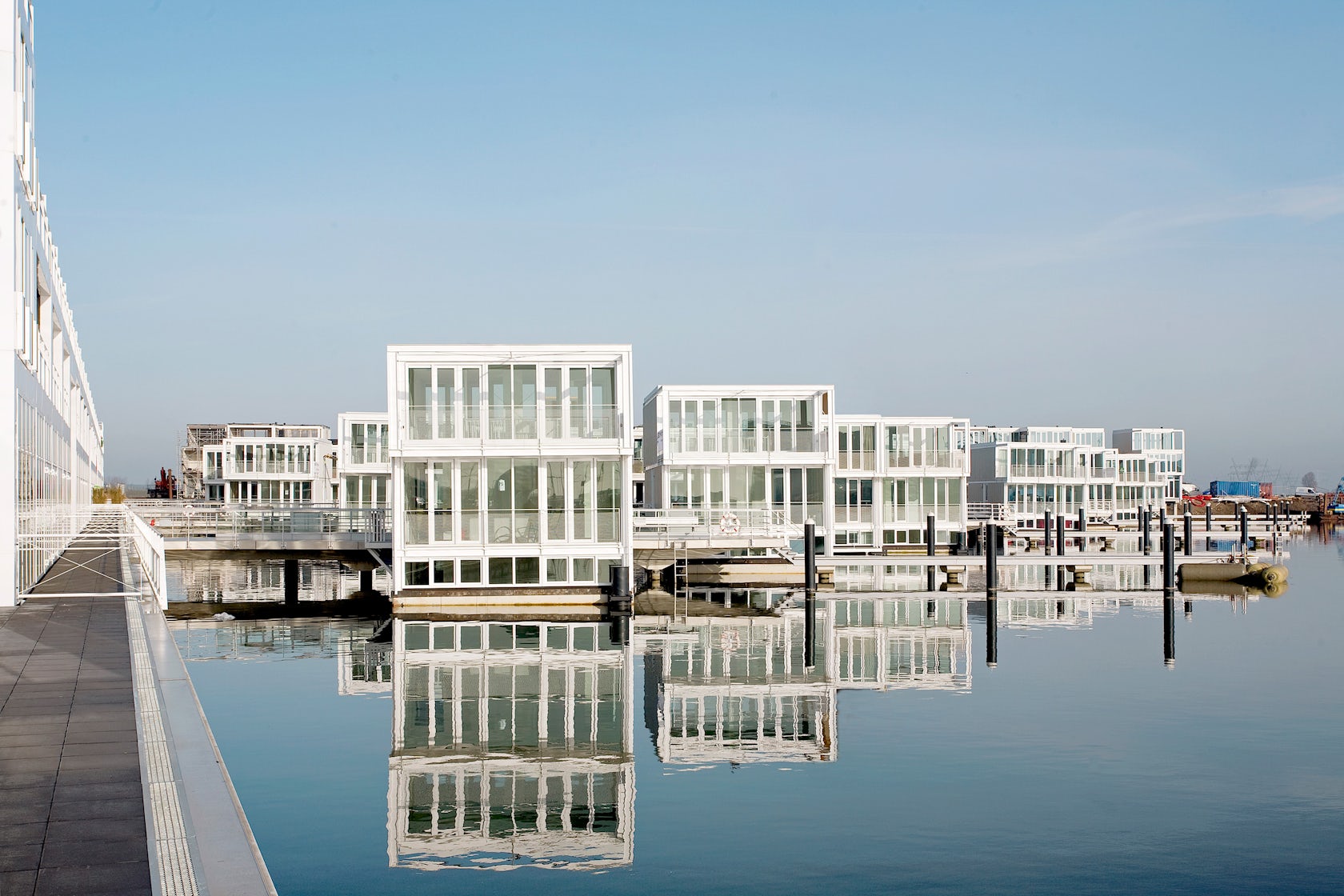Architizer's 13th A+Awards features a suite of sustainability-focused categories recognizing designers that are building a greener industry — and a better future. Start your entry to receive global recognition for your work!
Water is considered one of the most difficult elements to account for in design. No matter what tactics are applied (retaining walls, waterproofing, elevated sites) it still finds a way to get over, around or in whatever obstacle we’ve created to stop it. At a time when rising sea levels pose a serious threat to many of the world’s most important built environments, this fact is more pertinent than ever.
Fortunes are spent studying, testing and applying defensive measures, such as dams and floodgates, that fight the flow of water — but when these measures lose that fight, they do so in a big way. The buildings in this collection take a different approach: instead of trying to work against water’s natural inclinations, they’re designed to accommodate it. Most of these buildings are constructed directly on the water’s surface, many of them resting on structural members designed to be submerged, others on a floating base that can rise and fall with the water it rests on. They represent adherence not just to a design principle but also a grander philosophy: if you can’t beat them, join them.

© Charles Wright Architects

© Charles Wright Architects
Stamp House by Charles Wright Architects, Queensland, Australia
Designed with a small footprint — both literally and ecologically — this house in Australia sits on top of a sensitive wetland ecosystem. The massive concrete structure cantilevers over its piers, using that same mass as a passive thermal element for the outside walls, and also incorporates its own on-site water harvesting, re-circulation and sewage system.

© K2S

© K2S
Arctia Headquarters by k2s, Helsinki, Finland
Acting as the headquarters for a shipping company, this building is meant to allude to the icebreaker vessels the company administers. A ballast system in its base allows the floor to rise and fall as needed to maintain its level relative to an adjacent dock. Exterior façade materials were selected for their similarity to hull materials, and interior details also have their roots in shipbuilding techniques.

© Florian Holzherr

© Florian Holzherr
Floating House by MOS Architects, Canada
Connecting two sides of an inlet, this house was assembled at a nearby dock before being towed to the site by boat. Meant to embrace vernacular building methods, this anchored home features exterior access at both vertical levels, and offers its inhabitants unique views of the inlet it calls home.

© Yamamori Architect & Associates

© Yamamori Architect & Associates
Beach House – I by Yamamori Architect & Associates, Shima, Japan
While not technically built in the water, this house stands on a site that receives regular high tides, and is raised up off the ground to accommodate them. The design takes advantage of this necessary elevation for other means as well — in this case to offer privacy from direct sight lines on the street, and also to frame a view out to the sea beyond.

© David Chipperfield Architects

© David Chipperfield Architects
The Hepworth Wakefield by David Chipperfield Architects, Wakefield, United Kingdom
Located directly on a river, this sharply articulated concrete structure sits in contrast to the ground-based buildings adjacent to it. A clean but jagged exterior profile, which announces its presence on the otherwise smooth surface of the water, is repeated inside to define a series of gallery spaces.

© Architectenbureau Marlies Rohmer

© Architectenbureau Marlies Rohmer

© Architectenbureau Marlies Rohmer
Waterwoningen by Architectenbureau Marlies Rohmer, Steigereiland Ijburg, Netherlands
Still an experimental building type in the Netherlands (a country known for its below-sea-level elevations), the type of floating housing in this development is gaining popularity. This scheme —whose homes can be detached and moved via barge — is seen as exemplifying an advancement over the traditional houseboat in terms of accommodations and space, offering nearly identical amenities to buildings found only on land.

© Architekturfotograf Rasmus Norlander

© Architekturfotograf Rasmus Norlander
Skjern Åby Johansen Skovsted, Skjern, Denmark
Resting on piers that used to house a water pumping station, this nature center and observation point is a contemporary restoration of the original structure. Using wooden strip siding to cover the original concrete of the pumping station walls, it displays a natural material palette in deference to its surroundings.

© 2by4-architects

© 2by4-architects
Recreational Island House by 2by4-architects, Noord-Holland, Netherlands
Occupying the end of a small jetty, this house was designed to bring the natural setting of an adjacent lake into the house itself. It accomplishes this with a folding façade that can be opened to allow access to the lake directly from the living room. This wall also folds back across a corner, giving the appearance that the interior of the house is part of the dock itself.
Architizer's 13th A+Awards features a suite of sustainability-focused categories recognizing designers that are building a greener industry — and a better future. Start your entry to receive global recognition for your work!




